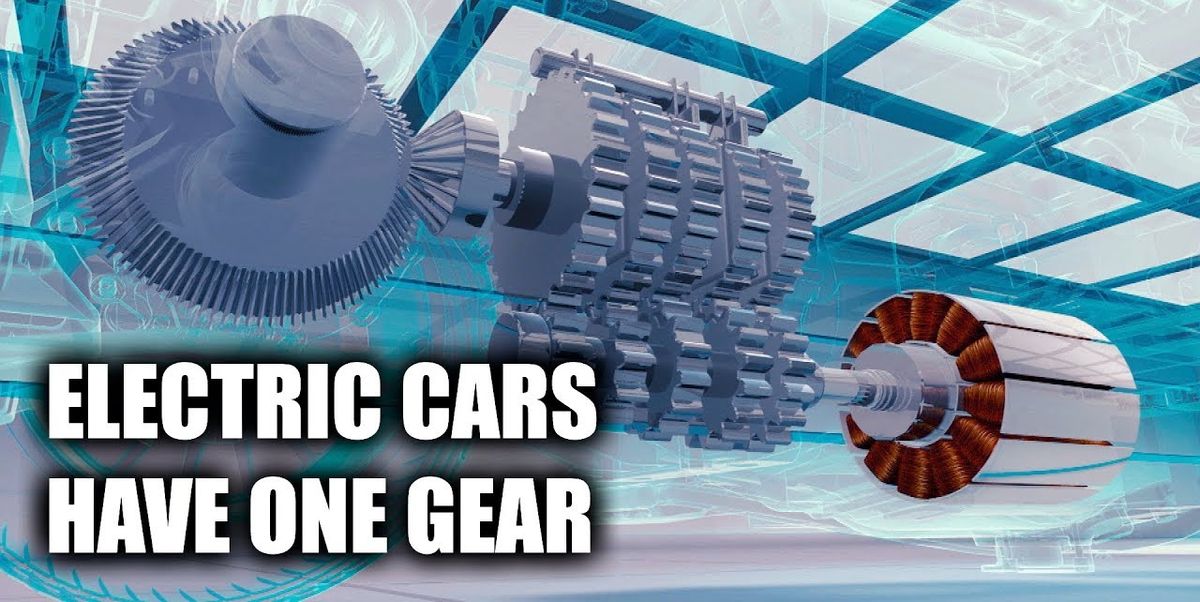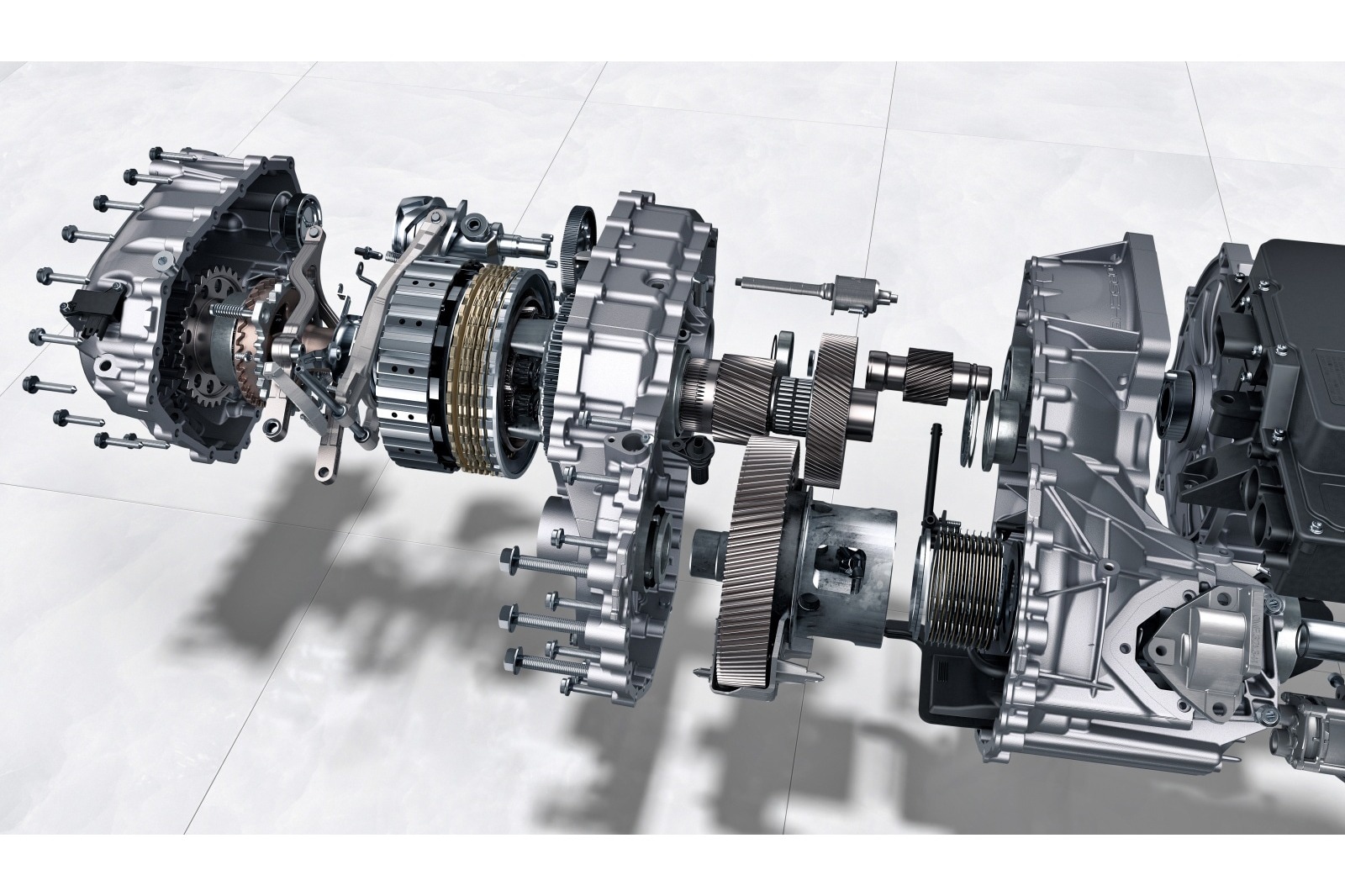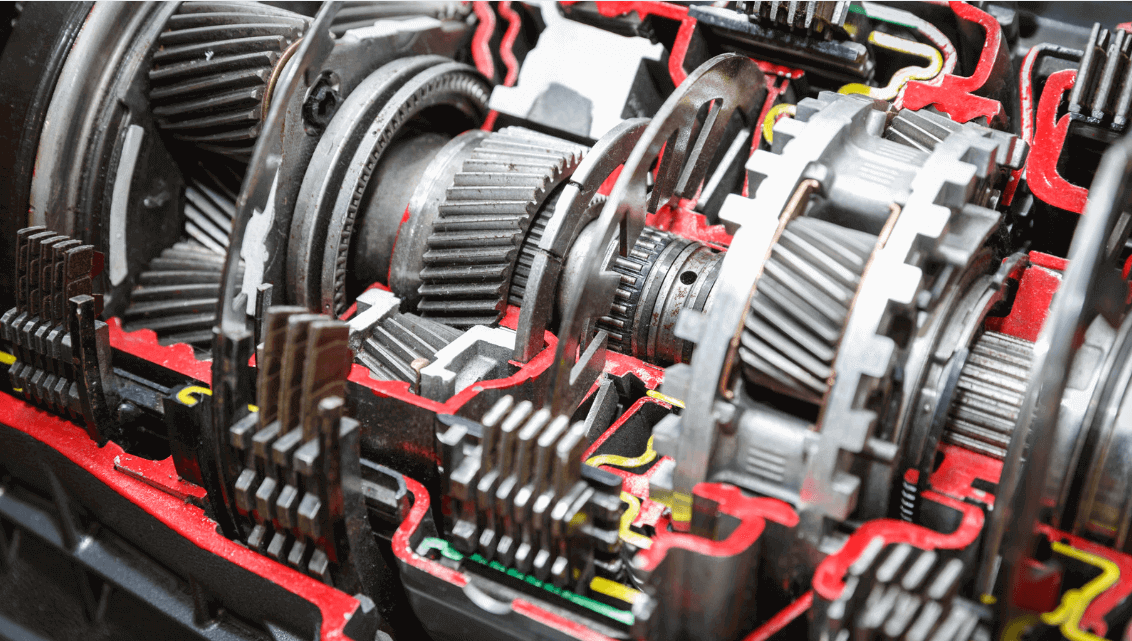Electric cars often have simpler transmissions than traditional vehicles. Many models use a single-speed transmission system.
Electric vehicles (EVs) are revolutionizing the automotive industry with their eco-friendly technology. Unlike their internal combustion engine counterparts, EVs typically feature a more straightforward transmission design. This is because electric motors deliver power differently, allowing for consistent torque across a broad range of speeds.
As a result, complex multi-speed transmissions are generally unnecessary. This simplicity not only reduces maintenance requirements but also enhances the driving experience with smooth acceleration.
Understanding the transmission system in electric cars is essential for prospective buyers and automotive enthusiasts alike, as it highlights the innovative engineering that makes EVs a compelling choice for the modern driver.
The Mechanics Of Electric Cars
The Mechanics of Electric Cars reveal a fascinating world of advanced technology. Unlike traditional vehicles, electric cars use electric motors powered by batteries. This design leads to a simpler, more efficient system.
Electric Motors Vs. Internal Combustion Engines
Electric cars differ greatly from their gasoline counterparts. The key distinction lies in the propulsion method. An electric motor replaces the internal combustion engine. Electric motors are simpler, with fewer moving parts. This means less maintenance and quieter operation. No exhaust systems, fuel injection systems, or radiators are needed. Instead, electric cars use a battery pack to store and deliver energy. This creates instant torque, offering quick acceleration.
Key Components Of An Electric Drivetrain
An electric drivetrain consists of several crucial parts. The most important include:
- Battery Pack: Stores the electrical energy.
- Electric Motor: Converts electrical energy into mechanical energy.
- Inverter: Changes direct current (DC) from the battery to alternating current (AC) for the motor.
- Single-speed Transmission: Transfers power from the motor to the wheels.
Unlike traditional cars, electric vehicles typically have a single-speed transmission. There’s no need for multiple gears. Electric motors can operate efficiently over a wide range of speeds. This means smoother acceleration and no gear-shifting.

Credit: www.cars.com
Traditional Transmissions And Their Function
Understanding how cars move requires a peek into traditional transmissions. These complex components play a crucial role in managing a vehicle’s power. They handle engine output and ensure wheels turn just right. This balance lets cars move smoothly, whether speeding up or slowing down.
The Role Of Gears In Conventional Vehicles
Gears in traditional cars adjust the power from the engine. They match engine speed with wheel speed. This change helps cars move at different speeds. Small gears make cars go fast, big gears are for slow speeds. Gears shift to find the best power balance.
How Transmissions Affect Performance
Performance links closely with transmissions. The right gear shift can mean faster acceleration. It can also mean better fuel economy. Transmissions make sure engines work within the best power range. This ensures a smooth ride and keeps the engine healthy.
- Smooth gear shifts equal less engine strain.
- Right gear choices boost speed and efficiency.
- Good transmission care extends car life.
Comparing Drivetrains: Electric Vs. Gasoline
The battle between electric and gasoline vehicles is not just about fuel efficiency or carbon emissions. It extends deep into the heart of these machines: the drivetrains. Electric and gasoline cars have distinct ways of powering wheels and managing energy.
Efficiency Differences
Electric cars boast impressive efficiency compared to their gasoline counterparts. With fewer moving parts, electric vehicles (EVs) convert more than 77% of the electrical energy from the grid to power at the wheels.
In contrast, gasoline vehicles are less efficient. They convert only about 12-30% of the energy stored in gasoline to power at the wheels. This is due to the heat and friction produced by the internal combustion engines.
| Drivetrain Type | Efficiency |
|---|---|
| Electric | >77% |
| Gasoline | 12-30% |
Acceleration And Torque Management
When it comes to acceleration, EVs take the lead. They deliver instant torque for quick and smooth acceleration. This is because electric motors generate peak torque from zero RPM.
Gasoline engines, on the other hand, need to rev up to produce maximum torque. This results in a delay commonly referred to as “turbo lag” or “throttle response” time.
- EVs: Instant torque, zero RPM.
- Gasoline Cars: Delayed torque, higher RPMs needed.

Credit: www.roadandtrack.com
The Simplicity Of Electric Car Design
The design of electric cars is a model of simplicity. Unlike traditional vehicles, electric cars often do not require complex transmissions. This straightforward approach allows for more efficient operation and less wear and tear.
Benefits Of Fewer Moving Parts
The fewer components an electric car has, the less likely something will break. This simplicity leads to a range of benefits:
- Improved reliability due to fewer parts that could fail.
- Enhanced energy efficiency, as energy loss from component friction is minimized.
- Quicker acceleration without the need to shift gears.
Maintenance Advantages
Electric cars boast significant maintenance advantages:
| Component | Maintenance Needs |
|---|---|
| Engine | None, as there is no traditional combustion engine. |
| Oil Changes | Not required, saving time and money. |
| Transmission Fluid | Non-existent; no transmission system to lubricate. |
This reduction in maintenance not only saves on costs but also reduces the time spent on vehicle upkeep.
Do Electric Cars Need Transmissions?
Many people wonder if electric cars work like traditional vehicles. One big question is about transmissions.
Single-speed Transmission Explained
Electric cars are unique. They often use a single-speed transmission. It’s different from the multi-speed gearbox found in gas-powered cars. These cars don’t need to shift gears frequently. Why? Because electric motors provide a wide range of torque. This means they can go from slow to fast without changing gears. It’s simple and efficient.
Why Multi-speed Gearboxes Are Less Common
Multi-speed gearboxes aren’t needed in most electric cars. Electric motors can reach high speeds without them. They are also heavy and complex. This can reduce an electric car’s efficiency. So, designers often avoid them. Some high-performance electric cars might use them, but it’s rare.
Innovations In Electric Vehicle Transmissions
Electric cars are reshaping the automotive landscape. One key area of transformation is their transmissions. Unlike traditional cars, many electric vehicles (EVs) have simplified drivetrains. Yet, there’s a growing trend in designing more complex transmissions for EVs. This brings us to the latest innovations in electric vehicle transmissions.
Developments In Multi-speed Ev Transmissions
Multi-speed transmissions for EVs are on the rise. These systems offer improved efficiency and performance. Engineers are now crafting transmissions with two or more speeds. This shift aims to enhance the driving experience. The benefits include better acceleration and higher top speeds. Companies are investing in R&D to make these advanced transmissions. They are striving to balance complexity with reliability.
- Increased range: Multi-speed gearboxes can extend an EV’s driving range.
- Optimized power: Drivers enjoy more power at low speeds and smoother highway driving.
- Energy saving: These gearboxes can save energy, making EVs even greener.
The Future Of Electric Drivetrains
The future of EV drivetrains is exciting. Innovation is at the core of upcoming developments. Next-generation EVs might not resemble today’s models. Engineers are exploring new materials and designs. These advancements could lead to lighter and more efficient systems.
| Feature | Impact on EVs |
|---|---|
| Modular designs | Customizable drivetrains for different vehicle types |
| Integrated systems | Compact units combining motor, transmission, and electronics |
| Material innovation | Use of lightweight composites for improved efficiency |
These emerging technologies could revolutionize how we think about EVs. Driving range and performance could see significant improvements. The drivetrain of tomorrow is not just about power. It’s also about smart, sustainable, and adaptable design.
Myths And Misconceptions
Many myths surround electric cars, especially about their transmissions.
Debunking Common Electric Car Myths
- Electric cars are slow: This is not true. Many electric cars accelerate faster than gas-powered cars.
- They are more expensive to maintain: Electric cars actually have fewer moving parts, leading to lower maintenance costs.
- Battery replacements are costly: While batteries can be expensive, they typically last many years before needing replacement.
Transmission Misunderstandings
Do electric cars have transmissions? Many people think they do, but it’s not the same as in gasoline cars.
| Car Type | Transmission Type |
|---|---|
| Gasoline Car | Multi-speed |
| Electric Car | Single-speed or none |
Electric cars often use a single-speed gearbox. This means there’s no need for multiple gears to shift through.
The Impact On Drivers
The Impact on Drivers centers on how the emergence of electric vehicles (EVs) transforms the driving experience. Understanding the role of transmissions in EVs is crucial for drivers accustomed to traditional internal combustion engine vehicles.
Driving Experience In An Ev
Electric cars offer a distinct feel behind the wheel. Drivers notice the quiet ride and instant torque. These cars accelerate smoothly without gear shifts. This change leads to a simpler and often more pleasant driving experience. No clutch pedal or gear lever exists in most EVs. This simplicity allows drivers to focus more on the road and less on the vehicle’s operation.
What Drivers Need To Know About Ev Transmissions
Electric cars generally do not have multi-speed transmissions. Instead, they use a single-speed gearbox. This gearbox directs power from the electric motor to the wheels. Some high-performance models may have two-speed transmissions. But this is rare. The lack of a traditional transmission means less maintenance for drivers. No oil changes for the gearbox are necessary. No transmission fluid checks are required.
- Less maintenance means more savings over time.
- No complex gear systems lead to fewer mechanical issues.
- Instant power delivery offers a unique and enjoyable driving experience.
Drivers should understand that EVs rely on regenerative braking. This feature slows the car by using the electric motor as a generator. It converts kinetic energy back into stored energy in the vehicle’s battery. This process feels different from traditional engine braking. It can extend the driving range and reduce wear on brake components.
| Feature | Impact on Drivers |
|---|---|
| Instant Torque | Quick and responsive acceleration. |
| Single-speed Gearbox | Smooth driving without manual gear changes. |
| Regenerative Braking | A different feel when slowing down, with added efficiency. |
Embracing electric cars means drivers must adapt to these changes. The transition can be seamless with understanding and experience. EV transmissions contribute to a cleaner, more efficient driving future. They also promise an enjoyable and refined journey on the road.
Choosing An Electric Car
Electric vehicles (EVs) are reshaping the automotive world. With the rise of EVs, understanding their components becomes essential. Unlike traditional cars, many electric cars do not have a conventional multi-gear transmission. This fact changes the game when selecting the right EV for your needs.
Factors To Consider When Buying An Ev
Before deciding on an electric car, consider several key points:
- Battery Range: The distance an EV can travel on a single charge is crucial.
- Charging Infrastructure: Availability of charging stations can affect your daily use.
- Vehicle Size and Type: Match your choice to your space needs and driving habits.
- Price: EVs come in various price ranges; find one that fits your budget.
- Incentives: Look for tax credits and rebates that can make buying an EV more affordable.
- Brand and Model: Research reliability and customer satisfaction ratings.
How Transmission Technology Affects Your Choice
Electric cars typically use a single-speed transmission. The simplicity of this system offers several benefits:
| Transmission Type | Benefits |
|---|---|
| Single-speed |
|
The absence of a multi-gear transmission means maintenance costs may be lower. This simplicity also translates to instant torque and seamless power delivery. When selecting an EV, understand that the driving experience will differ from traditional vehicles due to this unique transmission setup.

Credit: www.edmunds.com
Conclusion
Electric cars often raise questions about their mechanics, including their transmission systems. Unlike traditional vehicles, many electric models use a single-speed gearbox instead of a multi-speed transmission. This design simplifies the drivetrain and enhances efficiency. As technology evolves, understanding these differences becomes crucial for informed automotive choices.

Leave a Reply